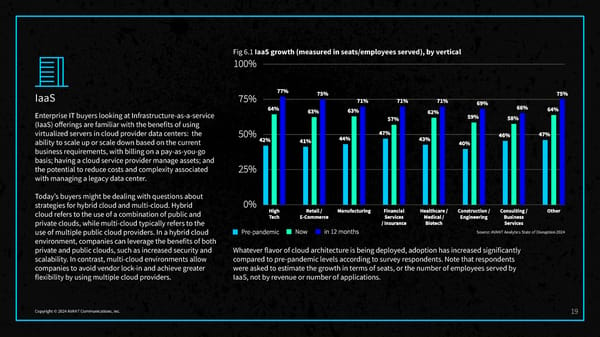IaaS Enterprise IT buyers looking at Infrastructure-as-a-service (IaaS) offerings are familiar with the benefits of using virtualized servers in cloud provider data centers: the ability to scale up or scale down based on the current business requirements, with billing on a pay-as-you-go basis; having a cloud service provider manage assets; and the potential to reduce costs and complexity associated with managing a legacy data center. Today’s buyers might be dealing with questions about strategies for hybrid cloud and multi-cloud. Hybrid cloud refers to the use of a combination of public and private clouds, while multi-cloud typically refers to the use of multiple public cloud providers. In a hybrid cloud environment, companies can leverage the benefits of both private and public clouds, such as increased security and scalability. In contrast, multi-cloud environments allow companies to avoid vendor lock-in and achieve greater flexibility by using multiple cloud providers. 19 Fig 6.1 IaaS growth (measured in seats/employees served), by vertical Whatever flavor of cloud architecture is being deployed, adoption has increased significantly compared to pre-pandemic levels according to survey respondents. Note that respondents were asked to estimate the growth in terms of seats, or the number of employees served by IaaS, not by revenue or number of applications. Copyright © 2024 AVANT Communications, Inc. Source: AVANT Analytics State of Disruption 2024
 2024 State of Disruption Page 20 Page 22
2024 State of Disruption Page 20 Page 22